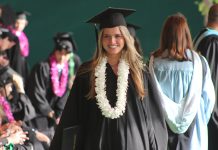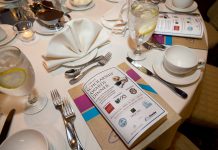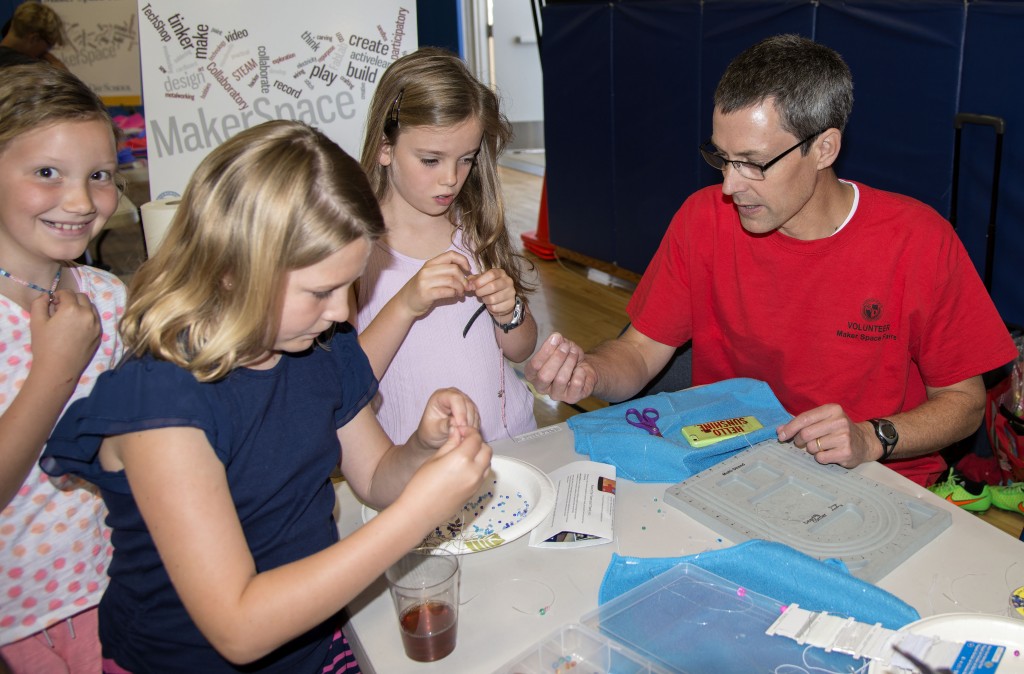
More than 200 students and parents came together recently to imagine, design and create projects focused in science and technology.
Harbor Day School in Corona del Mar held their first-ever Maker Faire on April 18. The faire was based on the “maker space” movement, which focuses on a hands-on creative learning experience through designing, innovating, tinkering, and making gadgets and projects.
“You can learn a lot from tinkering,” said HDS Technology Directory and faire organizer, James Gapp.
They focused on the “cool factor” and making the projects interesting and educational, Gapp said. It’s a fun way to spark an interest in the STEAM – science, technology, engineering, art, and math – fields, he noted.
A variety of booths allowed visitors to create paper gliders, gum drop structures, programmed games using Scratch coding, wind powered cars, and other computer based activities and art based activities.
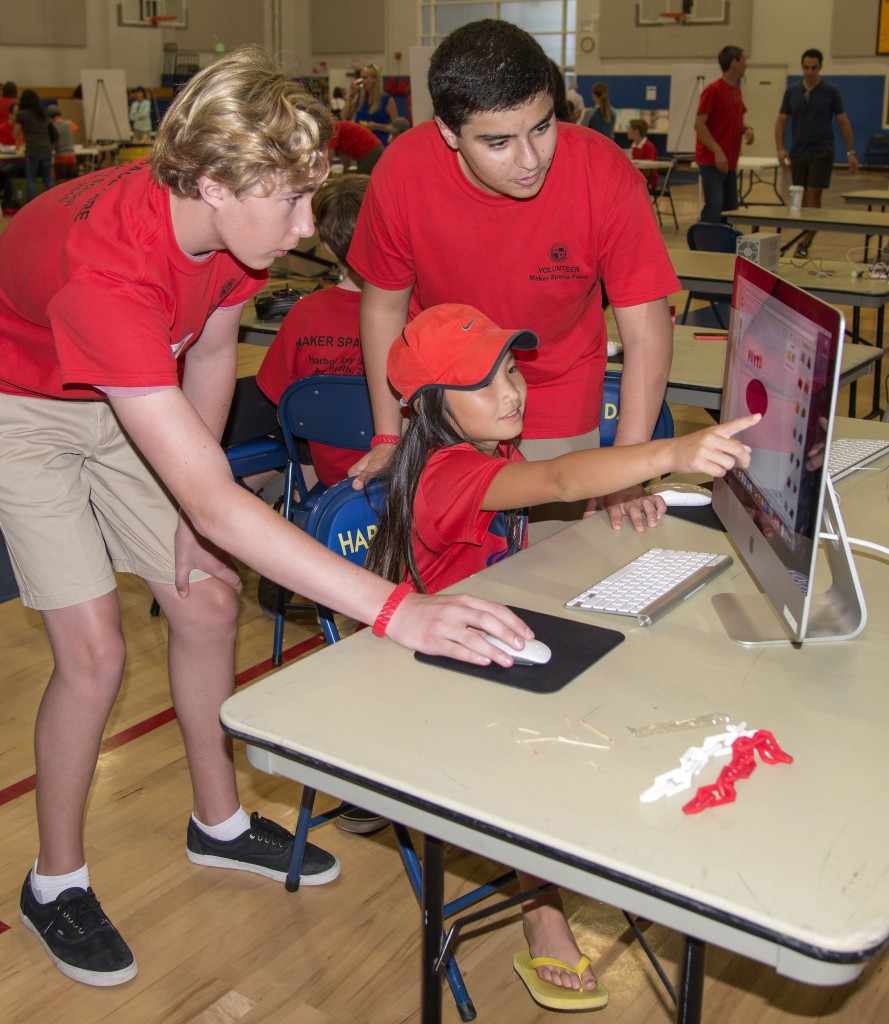
— Photo by Charles Weinberg
The creations tend to be part-art project, part-science experiment and part-engineering, the school explains on their website.
This will hopefully lead to problem solving skills and an engineering mindset, Gapp said, and how to collaborate and work as a team.
It also teaches kids perseverance and grit, Gapp continued. It’s important they learn to keep trying, even if they make a mistake, he said.
“That’s kind of the mentality we’re trying to instill,” he said.
“A lot of kids are afraid to fail, they don’t know what to do (when they fail) and sometimes they don’t even start something because of that fear,” Gapp added.
These type of projects also include a tactile component that makes it easier for the kids to understand, added Cynthia Sakraney, mother of HDS fourth grader Shaan, 10.
“It fosters creativity and learning at the same time in a hands-on way,” she said.
It also helps keeps the kids interested, added Eve Fudge, parent of HDS graduate and Sage Hill School senior Rebecca, 18, who was at the faire running a booth about pinhole photography.
“This really starts the kids off early seeing the principles put into practice from go to wow,” Fudge said.
In previous years, the kids had to create inventions, but presented them in a very different way, Fudge said. There was more information to read and less of an interactive component, she explained.
Kids have short attention spans, Fudge pointed out, and by changing the presentation it engages them in the idea.
“It’s a complete turnaround from passive learning and being bored by a lot of information,” Fudge said. “Here… they see that they start with nothing and end up with something viable using the science and engineering they’ve learned along the way.”
The students also worked on projects throughout the year related to the maker movement, like creating spaghetti and marshmallow structures, printing designs with the 3-D printer, building drones, working with electronics, coding a program, and more.
So they decided to make a big, official event around all the other small projects they’ve tried, Gapp said.
The 3-D printing was one of the more impressive booths at the faire, with kids learning how to create both small, simple projects and larger more complicated items.
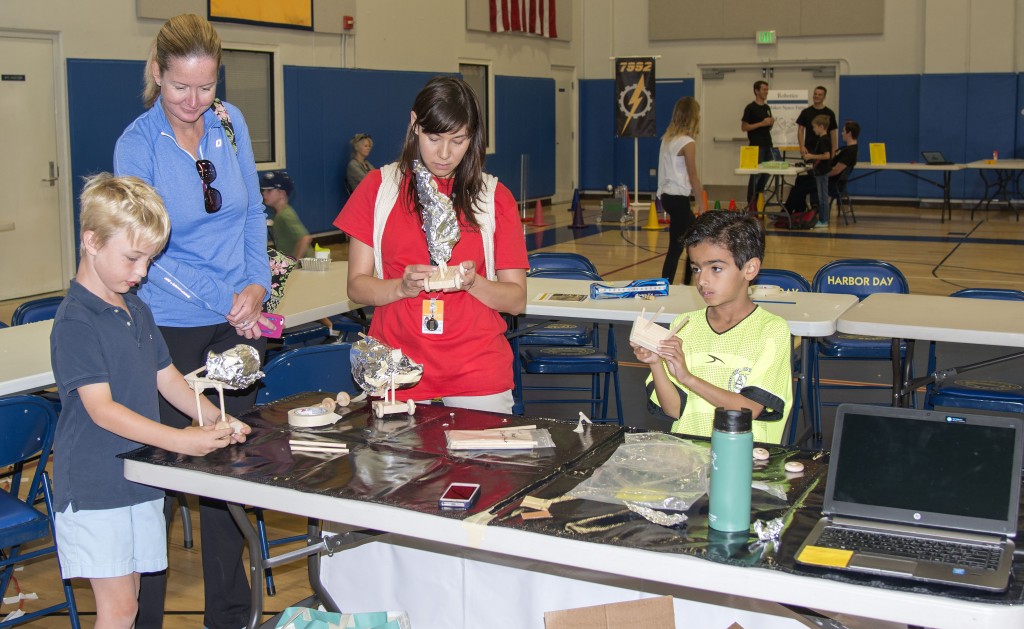
The third graders had previously used the 3-D printer earlier in the year when they created Valentine’s Day mailboxes. The mailbox was made out of cardboard and they had the option of creating a 3-D design to add to the box.
Peyton Vovan, 9, was among the third graders who opted to try out the high-tech printer.
“It was an opportunity to see what you can do,” she said.
She wanted her mailbox to be a “love monster” and used the 3-D printer to add a red heart with her initial “P” on it.
Vovan used a drag-and-drop type program to design a heart shape.
“It actually wasn’t that hard,” she said.
“Not just older kids can do this,” Vovan noted. It’s easy enough for younger kids too, she said.
She sized the heart to her liking and printed it out, which took about two hours. Some bigger, more detailed projects took upwards of 10 to 15 hours, she said, one more complex item took the entire night to print.
It was “pretty cool” to be able to hold something she thought of and designed, she said.
“It was really fun,” Vovan said. “You could do whatever your mind wanted to.”
For more information, visit harborday.org.



